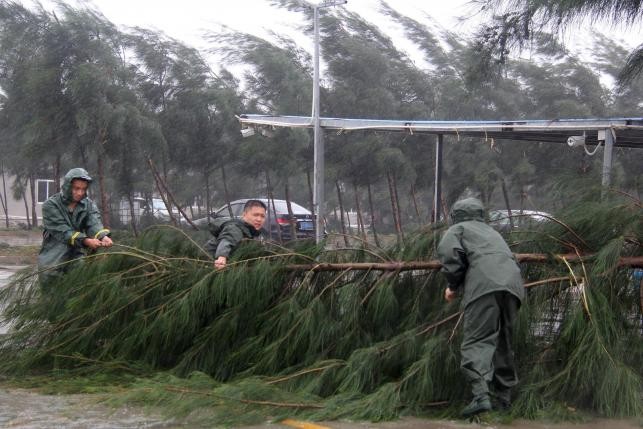At least 11 people were killed and another 243 were injured after Typhoon Mujigae made a surprise landing in southern China on Sunday, according to the state-owned Xinhua News Agency.
The typhoon, whose name means "rainbow" in Korean, made landfall in Guangdong Province, leaving 10 people dead and four missing, before moving to neighboring Guangxi Zhuang Autonomous Region, according to the civil affairs departments of both provinces.
Local officials also blamed the tornadoes triggered by the typhoon for the widespread power outages and extensive damages to houses and infrastructure in Guangzhou, Guangdong's capital city, and Foshan.
In Guangxi, one person was killed after being hit by a fallen tree in the region's capital of Nanning.
The typhoon has also grounded flights and prompted suspensions of rail services along China's southern coast, including popular tourist destinations such as Hainan and Sanya.
Officials estimate a total of 3.16 million residents in Guangdong and 1.44 million in Guangxi were affected by the typhoon, forcing the evacuation of more than 200,000 people. Guangdong also reported 12.5 billion yuan ($1.87 billion) in economic losses and nearly 196,000 hectares of damaged farmland.
Packing winds of up to 180 km/h (112 mph) at its center, Mujigae landed in Zhanjiang, a port city in Guangdong's southwest, at 2:10 p.m. on Sunday after sweeping through Taiwan and the Philippines the day before.
"Mujigae is a super-fast attacker that has not been seen in decades. At least I have not seen in the last 30 years as a forecaster," said Lin Liangxun, chief expert at the provincial meteorological station in Guangdong.
"From its formation to landing, the typhoon traveled 800 miles in 57 hours, while most other typhoons land in Guangdong three to four days after formation," he added.
In Zhanjiang, heavy winds and rain brought a telecommunications blackout, with power and water cut off in most areas. At least 10 percent of households were still without electricity as of Monday.



























